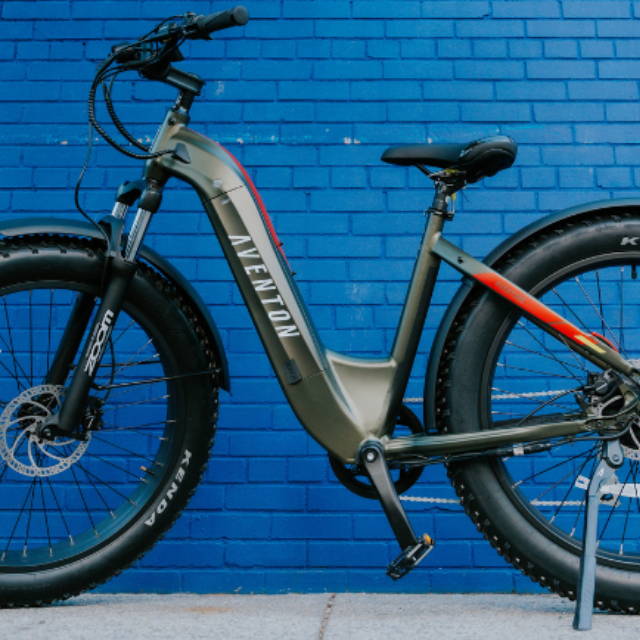A good-quality electric bike usually costs between $2,000 and $4,000 at retail, though premium models can run much higher. At Upway, you can find both new and pre-owned e-Bikes from leading brands—often at discounts of up to 60%!
Bike-Share vs. Owning an E-Bike: What’s Right for You?
Written by: Rémy Rossi | May 21, 2025 | Time to read 6 min
Whether you want the grab-and-go convenience of bike-share or the freedom of owning your very own e-Bike, the choice is yours. I’ll help you decide.

More about the Author: Remy Rossi
Rémy Rossi is a bike writer, mechanic, and educator who got his start in community-based bike shops and co-ops. With a decade in the industry, he still wrenches on bikes when he can and plays bike polo on a fixie.

👋 Do you know Upway?
E-Bike options in mobility-friendly cities
Bike-share programs are nothing new, with long-standing programs in major and mid-sized cities around the country. These programs operate large fleets of bicycles parked in designated docks around the city— anyone can grab a bike and ride for a fee, returning it to another dock near your destination. In recent years, these programs have amplified their fleets with electric bikes, making it even easier and quicker to cross the city.
Cost comparison: bike-share vs. e-Bike ownership
Most bike share programs charge around $20-$25 for a monthly subscription. Prices vary, and there’s typically an e-Bike surcharge compared to the standard bicycles, around a few cents per minute. So if you’re often reaching for the e-Bike models in the dock, additional costs can add up. There are also more expensive per-ride or daily passes. Many programs offer discounted rates for low-income residents, students, or folks enrolled in assistance programs.
No matter how you spin it, purchasing an e-Bike for yourself is a much larger initial investment. But that bike is completely yours, and you can even sell it or trade it in later on when it’s time for an upgrade— and Upway can help with this!
A high-quality electric bike typically retails for between $2,000 and $4,000, with top-tier models priced even higher. At Upway, you’ll find both new and certified pre-owned e-Bikes from top brands, available at up to 60% off! Plus, many states and cities are currently offering e-Bike incentives to lower the purchase cost for residents and encourage ridership, so that initial cost may be even more affordable than you think.
Pros & cons: owning your e-Bike

Your personal e-Bike is also customizable, so you can install a rear rack, panniers, additional lights, and more than go beyond that small front rack-ish thing on bike-share models. Arguably, the biggest plus is that your e-Bike is always available to you— sometimes there aren’t any shared bikes in your area, or the e-Bikes that are parked don’t have much charge left.
However, e-Bike ownership isn’t always all sunshine and rainbows. Buying an e-Bike is a larger investment upfront, and the cost may not be worth it for infrequent riders. Also, there’s the risk of someone stealing your e-Bike, which can really rain on your parade.
Pros & cons: using bike-share e-Bikes

The advantages of using bike-share are that it’s likely more affordable for infrequent riders and maintenance-free. These bikes are built like tanks, so you’ll rarely experience a mechanical issue or flat tire (flat tires are actually impossible on many models). Frequent users like the simplicity of not having to worry about bike theft or storing your bike inside your home, especially in smaller apartments or walk-ups.
Some downsides, however, include that the bikes may feel clunkier and heavier compared to standard bikes, though the e-Bike options compensate for this. There’s also the risk that there aren’t any available bikes at the bike-share dock you’re headed to, or it’s full at your destination dock, meaning you have to park it at another.
¿Por qué no los dos? Mixing ownership and bike-share

Frequently Asked Questions
How much do electric bikes cost?
Is it better to have a removable battery on an electric bike?
I’m a big fan of removable batteries since they offer more options for charging, along with the advantage of swapping in a spare battery to extend the range. Most electric bikes have a removable battery so a majority of bike manufacturers and riders must agree with me. However, a non-removable battery is definitely not a deal breaker.
Should I remove my e-Bike battery when not in use?
For short-term storage, it’s encouraged to leave the battery on the bike where it’s designed to be. For long-term storage, take it out and keep it at room temperature. Modern chargers are designed to prevent overcharging, but keeping it at 100% charge levels still puts extra stress on the battery.
Key Takeaways
- Cost vs. Commitment: Bike-share is typically cheaper upfront and great for occasional riders, while owning an e-Bike is a bigger investment that pays off for frequent cyclists.
- Convenience & Customization: Shared bikes offer easy access without the hassle of maintenance or storage, but personal e-Bikes provide better performance, comfort, and gear options.
- Hybrid Strategy Works: Combining both options— owning your own e-Bike and using bike-share as needed— can offer the best of both worlds.



